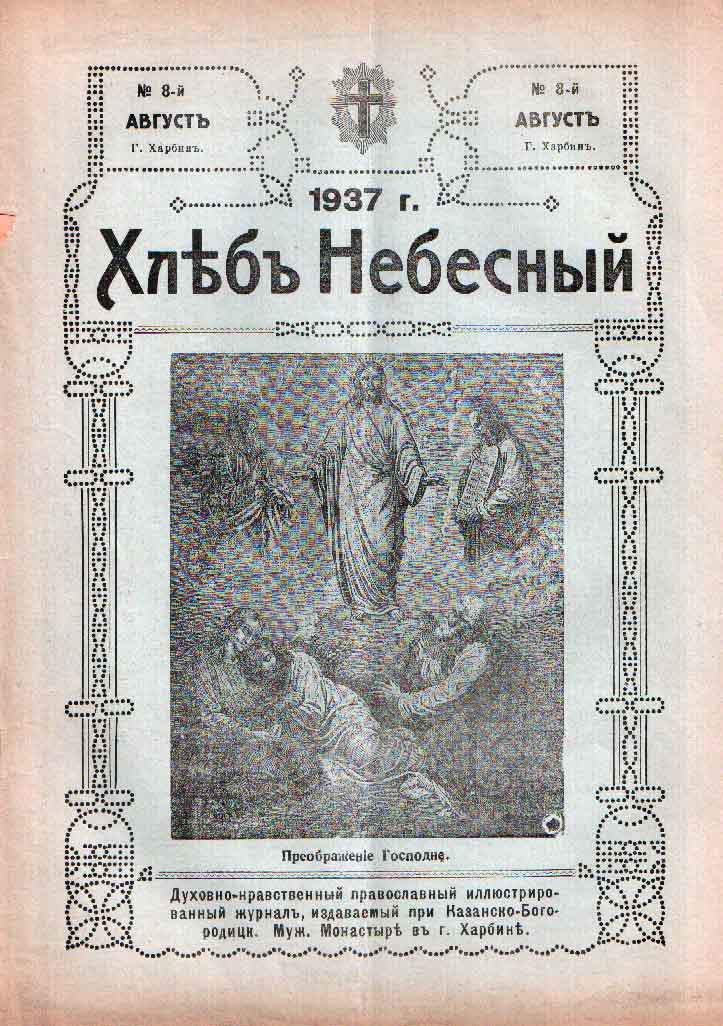According to the Okorokov this badge was approved in 1944. The badge is a silver-colored coat of arms shield; in the central part of the shield, diagonally, there are three ribbons of Russian national colors (white-blue-red). At the bottom of the shield placed a kanji for the area/city, The badge was a distinctive sign of Russian emigrants in Manchu Diguo and testified "to the belonging of its bearer to a common emigrant family, united, united by common goals, desires and devotion to the same ideals. The image of the badge was published in the emigre magazine "Ray of Asia". (1944. No. 1/112. P. 62).
Source.
Okorokov A. V. (2005) Badges of the Russian emigration 1920-1990. - M .: Collector's Books, 176 p.
The very same badge was shown in the book of Buyakov.
The picture of the badge was taken from the emigrant magazine "Heavenly bread/Хлеб небесный" that was published in 1944.

Хлеб Небесный — Википедия
Source.
Buyakov A.M. (2005) Badges and awards of Russian émigré organizations in China (Dairen, Tianjin, Harbin, Hunchun, Qinanfu, Shanghai), 1921-1949: materials for the reference book." - Vladivostok: Russian Island , 216 p.
The previous badge has a kanji 哈 that stands (most likely) for 哈尔滨 - Harbin

Harbin - Wikipedia
Another badge.
No.190
Size 26 х 24 mm.
Thickness 0.75 mm.
Weight 0.87 g.
Numbered on reverse and obverse bears kanji
闗
